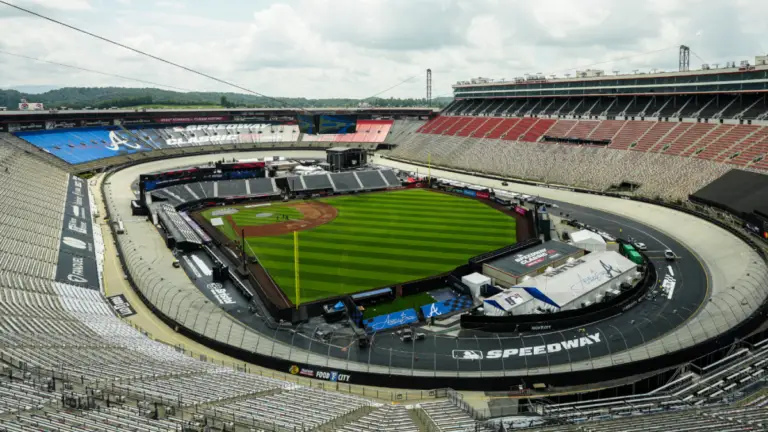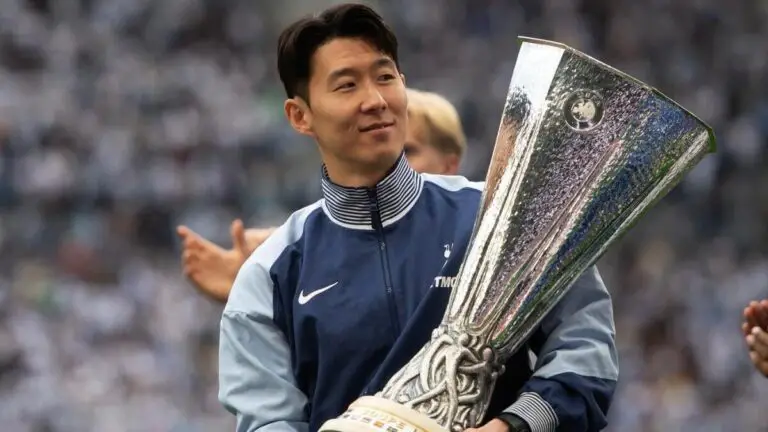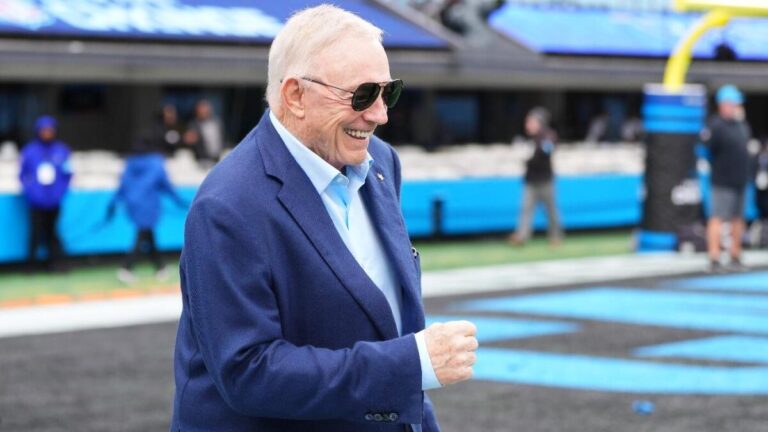
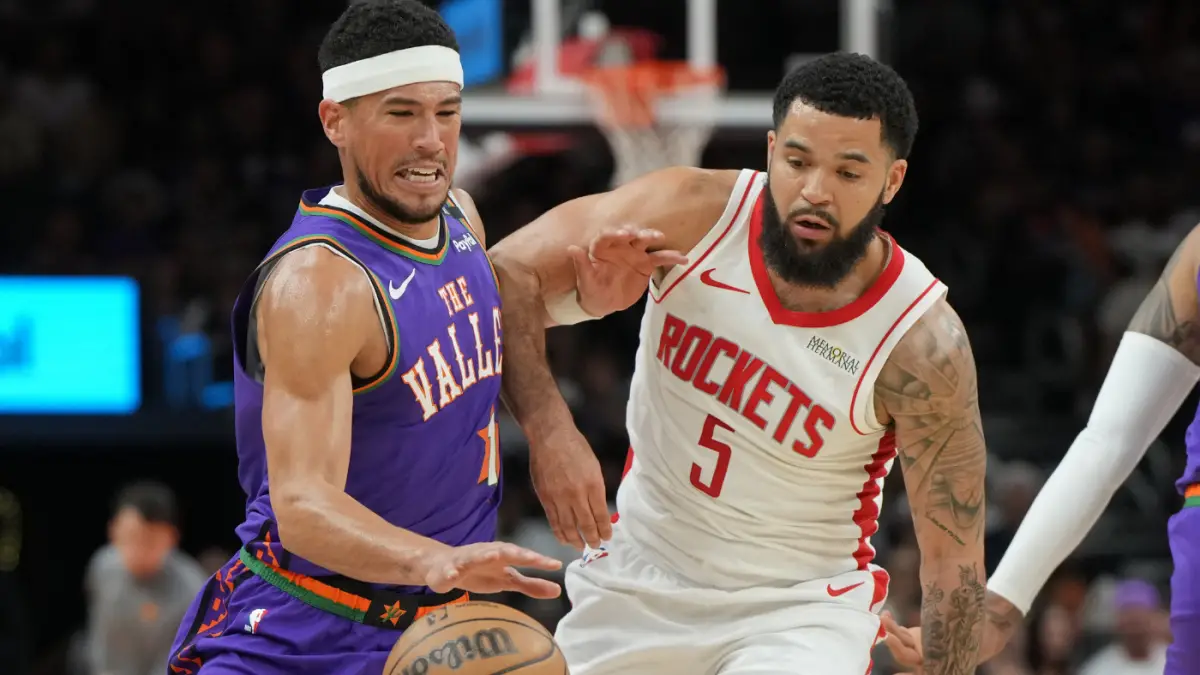
Ranking NBA’s 10 most interesting contract extension candidates: Devin Booker, Trae Young on star-studded list
Ranking NBA’s 10 most interesting contract extension candidates: Devin Booker, Trae Young on star-studded list
Once upon a time, the NBA’s best players used to move through free agency. Think about how many offseasons in the 2010s were dominated by where LeBron James or Kevin Durant would sign. Those days are over. No reigning All-NBA player has changed teams through free agency since 2019, when Durant, Kawhi Leonard and Kemba Walker all did so.
So, what happened? A few things. Less than a year after that wild 2019 offseason, COVID happened. That effectively froze the cap for three years, and it created an environment in which many of the best players were afraid of going into free agency. They started signing extensions then. It took teams a little while to catch on to what was happening, but an inflection point came in 2021. Several teams spent years preserving cap space expecting Giannis Antetokounmpo to become a free agent that summer. Well, Antetokounmpo re-signed in Milwaukee, and no true stars became available. Suddenly, half of the league was bidding for Kyle Lowry, and teams recognized that cap space wasn’t as valuable anymore.
This created a bit of a feedback loop. Teams started saving less cap space because the free agents weren’t worth it, so players started extending more frequently because there was less cap space for them to sign into, which weakened the free agency pool further, which disincentivized preserving cap space, and so on. We’re about to go into a 2025 offseason in which only the Nets have significant cap space. The new model is for players to sign extensions so long as they can come anywhere close to fair market value. Then, if they want to move later, they just force a trade.
So, sure, we could preview free agency (and we have!), but the talent pool is pretty limited outside of role players. No, the real contract questions that need to be answered this offseason revolve around extensions. While supermax and rookie extensions are governed by their own sets of rules, the majority of players who are up for extensions this offseason will be governed by the standard veteran exception rules. So what are those rules?
- A player on a three- or four-year contract is eligible to extend on the second anniversary of signing his last contract. A player on a longer contract is eligible on the third anniversary.
- The salary in the first year of a veteran extension can reach as high as 140% of his salary in the final season of his existing contract or his max salary, whichever is lower.
- Any player signing a veteran extension is eligible for up to 140% of the NBA’s estimated average salary in the first year, regardless of what their previous salary was.
- Veteran extensions can include annual raises up to 8%.
- No contract can include more than five total seasons, including the years on the player’s existing contract.
So, those are the basics. In a few, specific cases, there are more obscure rules or concepts that will dictate what the player and team can or should do. So, with all of that in mind, let’s dive into some of the most interesting extension candidates of the offseason. We are not going to cover obvious max players in this space. I’ve written about Luka Dončić’s options here. Nikola Jokić and Shai Gilgeous-Alexander are both eligible for supermax extensions, it’s just a matter of when or if they want to sign them. The players we are covering here are the ones who have to negotiate or have hard decisions to make about whether now is the time to extend or not. We’ll start with perhaps the most interesting contract negotiation of the offseason.


That 140% limitation is pretty problematic where Jackson is concerned. His current contract is not only well-below market, but it descended annually. That makes his 2025-26 cap figure a meager $23.6 million. He can’t get close to his max with a 140% raise, and the Grizzlies can’t risk him getting to free agency in 2026, where the Lakers could be waiting with max cap space. They need to find a way to extend him this offseason if they plan to keep him at all, and fortunately for the Grizzlies, they have a path to doing so.
Rather than extending him based on the standard, veteran guidelines, the Grizzlies are aiming to renegotiate and extend him through cap space. The basic premise here is that they would boost his 2025-26 salary, and then give him a 140% extension on top of that. They started that process by trading Marcus Smart to Washington at the deadline. They’ll likely continue it by dumping John Konchar at some point. The Grizzlies need around $14 million in space to get Jackson up to his max on an extension. Right now, they’re at around $4.5 million. That’s a bridgeable gap.
Of course, things get much more interesting if there are any hiccups. If the Grizzlies can’t create the necessary cap space, Jackson probably becomes a free agent next summer. If Jackson decides he doesn’t want to re-sign in Memphis, he becomes one of the most interesting trade candidates of the summer because of his low cap figure for next season. Almost any team could afford to fit him onto their books for next season at least. The Desmond Bane trade cleared the way for a rebuild if the Grizzlies want one. For now, they are reportedly not planning to start one. They want to reload around Jackson and Ja Morant, and that starts with actually getting Jackson signed.
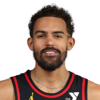

Young is an old-world max player. A 26-year-old four-time All-Star shot-creator that averages 25 points for his career and just led the NBA in assists? That was a no-brainer max in any other CBA environment. But now we live in apron world, and teams have to be conscious of every penny. Jalen Johnson starts a pricey rookie extension next season. Dyson Daniels will presumably get a similar extension this offseason, and the Hawks want to have some measure of flexibility to improve on this core.
For as valuable as Young’s offense is, he is a potentially unresolvable defensive problem. He’s taken steps as an off-ball player on offense, but that’s never been a strength. Right now, he’s probably somewhere between the 20th and 30th best player in the NBA. Paying that sort of player max money in this environment just isn’t tenable. Young would likely counter by threatening to find the max in 2026 free agency.
How serious a threat is that really? The Hawks have sniffed around Young trades in the past and never found an acceptable offer. He’s a very valuable player under a very narrow set of circumstances that few teams want to replicate. How many contenders can just hand him unilateral control of their offense and protect him on defense? Could a blank-slate cap space team like Brooklyn do it? Would a transitional team like the Clippers hand him the team while it pays off its pick debts? Maybe. But it’s not certain.
Young’s max figure is $229 million over four years. The goal for Atlanta would be to shave a nice chunk off of that — say, $30 or $40 million — so that they could structure the deal as a flat contract or one in which his annual salary descends as his younger teammates get pricier. That negotiation probably won’t be pleasant. Young, like Brandon Ingram last offseason, is going to be one of our first true stress tests of this CBA. What exactly constitutes a max player anymore? We’re about to find out.
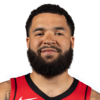

The Rockets re-signed Steven Adams over the weekend to a fairly interesting three-year, $39 million deal. The contract descends in annual value to help Houston deal with the impending expenses their younger players will create, but it also makes them enormously expensive for right now. With $211 million in salary at the moment, they are actually above the second apron. Now, they can easily get below it by waiving Jock Landale and his $8 million non-guaranteed salary, and don’t be surprised if they flip the No. 10 overall pick for future selections from another team to both avoid the cost of paying that pick this year and to prevent a repeat of Reed Sheppard’s rookie year in which there just weren’t any minutes available for him. But regardless, the Rockets are going to be expensive next season.
That’s where Fred VanVleet could potentially come in. He has a $44.9 million team option for next season. The Rockets could solve all of their money woes right now by declining that option, but they want to keep him long term. Therefore, we can probably expect a multi-year deal for him. However, the structure of that deal could vary wildly. If the Rockets want to save money this season, they could decline that option and re-sign VanVleet for something like $30 million next season with multiple future years tacked on. However, if they’re willing to pay the tax and flirt with the aprons this year, there’s another option: keep VanVleet at $44.9 million… but extend him at an even lower figure down the line.
Think of it this way: say VanVleet agrees to return to Houston for $75 million over three years. The Rockets could pay him $25 million per year, or they could pay him $45 million next season and then $15 million in the two subsequent seasons. With possible extensions looming for Jabari Smith and/or Tari Eason, it might make sense to front-load VanVleet’s deal. It also might make him a more useful cap figure for an in-season star trade. But doing so means paying a heftier tax bill this season. Either structure could make sense depending on what else the Rockets plan.


Irving and the Mavericks are in a somewhat similar position to VanVleet and the Rockets. Both sides likely want to pursue a long-term partnership. However, the Mavericks, like the Rockets, have financial concerns to consider. Landing Cooper Flagg was a franchise-altering stroke of luck, but it also made Dallas much pricier for next season. Right now, the Mavericks are basically pressed up against the second apron before making any improvements (specifically, adding a guard to start in Irving’s place while he recovers from a torn ACL). Dallas could remedy this by lowering Irving’s 2025-26 salary, but guaranteeing him more money in future years in exchange. This wouldn’t technically be an extension, but it would function similarly to one.
Here’s the catch: VanVleet has a team option, but Irving has a player option. That gives the notably mercurial Irving far more control over the proceedings than VanVleet has, and unlike VanVleet, Irving actually has been a max-caliber player in the past. He might refuse the sort of short-term pay cut Dallas needs him to take to open up meaningful flexibility out of pride. When the Nets reportedly offered Irving a contract extension with partial guarantees, he balked. That contributed to his eventual trade to Dallas.
Dallas can’t risk angering Irving after the fan backlash of the Luka Dončić trade. Aside from being a star player, Irving has been a good organizational soldier in the aftermath of that debacle. If he wants to opt in and try to get more than Dallas is offering in 2026 free agency, the Mavericks have no recourse. If he opts out — even in an environment in which Brooklyn is the only notable cap space team — they still have to cooperate with him if they hope to keep their short-term window open. Something is almost certainly going to get done here, but good luck predicting exactly what sort of structure a deal like this takes.


Booker is eligible for a two-year, $150 million supermax extension. By all accounts, the Suns plan to offer it. By all accounts, Booker plans to accept it. There probably isn’t going to be drama here. Booker seemingly wants to remain in Phoenix to help see the Suns through this rebuild. Mat Ishbia refuses to acknowledge how badly this team needs a true reset.
The real question here is whether or not an extension that pays Booker $75 million per year in his age-32 and age-33 seasons is a good idea. The answer is probably not. Booker is coming off of a relatively disappointing age-28 season. While he is an elite mid-range shotmaker, getting to his spots is going to be harder as he ages and he’s less reliable on 3s. He’s a star, but probably not a superstar. He’s made only two All-NBA teams, and one of them was a Third-Team selection that involved several superior players failing to reach 65 games. Most metrics paint him as something closer to a top-20 or top-25 player, much like Young, and that’s at his theoretical age peak.
Booker doesn’t want to get traded now and the Suns don’t want to move him. However, there’s an entirely plausible scenario in the near future in which one or both of those things change, and if they do, this extension probably lowers his trade value. If he ever deals with injuries (which he has thankfully mostly avoided), it torpedos it. This extension is probably happening, but it’s worth watching as one that could become problematic down the line.


On the surface, the concept of a two-year, $128 million Williamson contract extension is crazy. He’s never healthy! The Pelicans are a mess! Off the court, he’s dealing with a rape lawsuit. Why on Earth would the Pelicans re-sign him? Well, I’m about to make the idea sound even crazier. At the moment, Williamson’s entire contract aside from $7.9 million next season is non-guaranteed because he failed to meet certain health provisions. If Williamson does sign an extension, his entire current contract becomes guaranteed. Again, that’s a cataclysmic risk.
Here’s where things get interesting: what if the Pelicans could use the carrot of guaranteeing his existing contract to convince him to sign a two-year extension well below what his market value would be based on who he is as a player? Is there a number low enough that it’s worth guaranteeing the final three years of his existing contract? Or, conversely, could the Pelicans convince Williamson to sign a fully non-guaranteed extension? That’s not as crazy as it sounds either. It would give New Orleans extra team control on his future, but it would also ensure that if he remains with the Pelicans, it will be at a cap figure he deems appropriate. Should they ever want to keep him but lower that figure, they’d have to negotiate it with him and he could use that leverage to extract more years and guaranteed money.
An extension here is very unlikely. The Pelicans probably don’t want to risk guaranteeing his contract for any reason. Still, it’s an interesting cap exercise. After all, the Pelicans aren’t going to waive him this offseason, so functionally, they’d only be risking two years of guaranteed money. New Orleans probably isn’t bold enough to take such a risk now, but it’s something some front offices might look into. While the risk would obviously be high, the reward could be even higher.


Herro is the lower-end version of Young. In October, he’ll be eligible for a three-year, $150 million extension. That’s not quite max money, but it’s a substantial jump from his current deal, which hovers around 20% of the cap each year. That is probably around the figure Miami should aim to keep him at, and that would mean an extension closer to $120 million over three years.
Herro is a reigning All-Star, but unlike Young, he’s only gotten there once. He is also among the most defensively-deficient player in the NBA. The Cavaliers were so brazen about running every pick-and-roll at him in their first-round playoff series that they literally told the media about it. When the Heat went on their surprising run to the 2023 NBA Finals, it came without Herro. He could try to either solidify his All-Star standing or wait until 2027 free agency to test his market, but remember, the Heat tried to find a taker in a trade for Herro when they were pursuing Damian Lillard two summers ago. Interest was minimal.
This is a player type the league is swiftly moving away from. If you’re going to pay max money for a defensively vulnerable lead guard, he can’t just be a scorer. He has to be a reliable generator of team offense, like Tyrese Haliburton or Damian Lillard. That’s not Herro, and we’ll soon know if the Heat agree with that sentiment.
8. Kristaps Porziņģis, Celtics


By now you’re likely aware of Boston’s financial issues. The Celtics are currently in line for a $493 million payroll next season. They need to trim around $23 million in salary while filling out their roster to duck the second apron, which is a necessity for a number of longer-term roster-building reasons to say nothing of the cash costs. There is a very good chance that a Porziņģis trade is involved in those cost-cutting maneuvers.
However, Porziņģis’ value has never been lower. He missed 25 games in his first season in Boston and then missed most of the playoffs afterward. Last year he missed 40 games and a mystery illness weakened him through the postseason. Given everything that preceded his Boston tenure, he might just be forever untrustworthy from a medical perspective. Guaranteeing him anything might just be money down the drain, especially to a Celtics team that is suddenly mortal. They had the best roster in the NBA by far in 2024. That’s not going to be the case in 2027, when Jayson Tatum is coming off of an Achilles tear and the payroll has been trimmed dramatically.
Of course, risk creates opportunity. If Porziņģis is happy in Boston, wants to avoid a trade and is skeptical of his own earning power in 2026 free agency, it’s entirely possible that he’d consider a long-term extension with either significant protections against absences or at a price that the Celtics would deem tenable. Is the risk-reward calculus for Porziņģis at, say, mid-level money tolerable? It’s something for the Celtics consider as they attempt to reshape their team not just for next season, but for the next several.


One of the potential benefits to signing role players to below-market deals is that it potentially opens the door to below-market extensions under the right circumstances. Take Nesmith. The Pacers were proactive in re-signing him to a three-year, $33 million rookie extension before he proved that he was a starting-caliber player. As soon as they did so, he leveled up defensively and became a borderline elite shooter. Now he’s worth a lot more. However, he’s limited by the veteran extension rules to a three-year, $64 million extension.
If Nesmith were a free agent, he’d get more than that. Mikal Bridges is also extension eligible this offseason, but for $156 million over four years. Nesmith isn’t as durable, but he was a comparable player last season. He isn’t a free agent. He has two years left on his deal and is limited in what he can sign for. He also hasn’t made much money in his career because of that below-market contract, and given the ankle injuries he dealt with this season, he might not want to risk waiting two years to sign a new deal. Essentially, the stars might line up for Indiana to get Nesmith on another cheap extension because of how well they did with his first one.
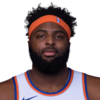

The Robinson situation is fairly similar to what Boston is going through with Porziņģis. When he’s on the court, he’s spectacular. He’s just rarely on the court. The big difference is that Porziņģis is starting at a high salary and has earned quite a bit of money in his career. The Celtics need him to go down. Robinson is starting from a fairly low salary—around $13 million—and he has earned roughly a quarter of what Porziņģis has in his career. He’s probably less eager to sign a team-friendly extension.
Robinson is eligible for around $89 million over four years. That’s low-end starting center money. Robinson is better than that, but if he rolls the dice on his health next season and gets hurt, he’s getting less in free agency. The Knicks could probably afford to fit any Robinson extension onto their books at least in basketball terms. Their salary structure is set up to just barely duck the second apron this season, spend two years above it (and so far above it that James Dolan winds up paying two hefty tax bills), and then ducking back below when Karl-Anthony Towns’ current deal expires. The Knicks lose no meaningful flexibility by paying Robinson. They just take a very expensive team and make it preposterously expensive. This is New York. They can afford it.
One could even argue paying Robinson makes the Knicks more flexible in the long term. Second-apron teams can’t aggregate salaries in trades. Therefore, if they ever want to trade for expensive players, they need to have expensive players on their books to deal. Robinson would be as much of a trade chip as he would a player. The Knicks probably won’t feel comfortably going out the full four years without some concessions on guarantees. They want that contract to remain tradable, after all. But given how important Robinson was in the playoffs, it’s hard to imagine they wouldn’t want to extend him.
NBA,Houston Rockets,Memphis Grizzlies,Boston Celtics,Phoenix Suns,New Orleans Pelicans,Atlanta Hawks,Kyrie Irving,New York Knicks,Brandon Ingram,Steven Adams,Jock Landale,Brooklyn Nets,Mikal Bridges,Zion Williamson,Miami Heat,Kevin Durant,Aaron Nesmith,Jayson Tatum,Marcus Smart,Jalen Johnson,LeBron James,Los Angeles Clippers,Los Angeles Lakers,Kemba Walker,Indiana Pacers,Cleveland Cavaliers,Dyson Daniels,Devin Booker,Fred VanVleet,Dallas Mavericks,Jabari Smith,Tari Eason,Ja Morant,Reed Sheppard,Shai Gilgeous-Alexander,Jaren Jackson Jr.,Trae Young,Mitchell Robinson,John Konchar,Desmond Bane,Kawhi Leonard,Kyle Lowry,Tyler Herro,Tyrese Haliburton,Damian Lillard,Giannis Antetokounmpo,Karl-Anthony Towns

